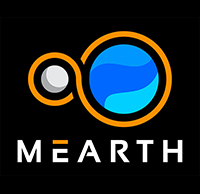

Project Moon Hut Paper #1
Using Intellectual Property and Tech Transfer to Align Long-Term Incentives
The success of a Moon-Earth economic ecosystem fundamentally depends on several activities to happen congruently inclusive of spurring innovation and rapid technological development. There is an abundant body of economics literature on innovation that sheds useful light on this central challenge. This paper discusses the use of innovation as a means for attaining a self-sustaining Moon-Earth ecosystem which should not be confused with having sustainable life on the Moon.
Historically, some of the greatest technological and economic leaps are a byproduct of narrowly focused intensive development of an industry or ecosystem: the first railroads, Portugal’s investment in long-distance ocean-going vessels, the electrification of entire nations, DARPA’s investment in the Internet, etc. In each and every transformation the ultimate success required the bringing together of many people with diverse talents for long durations of time researchers, engineers, managers, investors, politicians, entrepreneurs, etc.
The economic challenge of spurring any large technological leap therefore lies in the challenge of aligning the incentives of these various actors over a long enough period of time to allow for the innovation to take root. The simplest model would be to invest massive investments of capital over many years, with no guarantee of a return. This all-in approach works best when there is a government initiative or behemoth corporations are engaged which can centrally direct a project to its desired conclusion.
The only historical alternative to government and megacorporate initiatives is when an entire ecosystem of innovation emerges organically. This is when either a disconnected and/or an interconnected series of activities converge due to reasons of technological advances, economic conditions are ripe, changes in the ecosystem require new services, etc. The Industrial Revolution (“IR”) was not the result of any one firm, nor was it planned, and yet it produced a rapid succession of inventions and innovations that had some sort of connectivity. Each innovation builds on the work of a previous innovator, and so required a much smaller outlay of capital, giving each person involved an attainable incentive that does not depend on any external coordination, in a process that nevertheless compounds to create a much greater total result. Simultaneously, these innovations coincided with an alternative yet parallel innovation that collectively improved productivity while reducing costs and labor.
Unlike a centrally-directed project, however, this requires the coming together of many factors: in the case of the Industrial Revolution, the widespread presence of watermills, the increasing availability of metals, a high level of technical knowledge in the English population, etc. all formed a perfect environment for rapid and transformation growth. This requires more than a little luck, and it is impossible to guide these efforts toward a desired outcome—such environments are fundamentally decentralized. To be more specific, no one drove, lead, or managed the evolution, it happened because the ground was fertile with educational advancements, economic policy and so many other factors. Similarly, but in a more localized ecosystem, Stanford University was able to spur Silicon Valley’s success as a twentieth-century incubator of innovation, yet it did not guide the specific direction of innovation.
The concept of Mearth, —integrating the Moon and the Earth into a self-sustaining ecosystem and defined as new geography within the Moon and Earth’s trajectories and borders, promises to be a transformation of the second type. Bringing together a number of experts from different fields to solve a number of complex technical and organizational challenges could be a natural generator for innovation. But getting to Mearth is a much more difficult proposition. The scale of necessary investment far exceeds the resources of any one organization or for that matter any one country and yet in principle there does need to be quasi-plan so that globally everyone is rowing in at least the same direction. One could easily argue that to wait for a decentralized or organic ecosystem to evolve would take too long.
The primary economic question for Project Moon Hut’s leadership is therefore: is it possible to capture the best aspects of both incentive structures? To put it another way, can we combine a centrally-dictated vision with decentralized actors?
One obvious analysis could be, this mixed incentive structure depends in large part upon the way incentives are structured. If the entire payoff is deferred until the project achieves ultimate success, it becomes effectively impossible to keep efforts aligned: without a large backer, smaller actors will be unable to cover their own downside risks or commit enough of their own resources. However, if the project naturally incurs intermediate payoffs, large and small to keep actors engaged at any level, it is theoretically possible to distribute these in a centralized way as a substitute for backing by a single actor.
In the specific case of Project Moon Hut’s work, the intermediate payoffs to developing a fully self-sustaining Moon-Earth ecosystem, Mearth Ecosystem, are the technologies and Intellectual Property developed along the way, and the volume of on Earth networked ecosystems that generate opportunities every day along with mid and long term greater economic incentives.. Project Moon Hut’s structuring can 1) incentivize various actors to contribute by coordinating the distribution of the benefits of those innovations while 2) leverage societal benefits from built infrastructure and an ecosystem that fit today’s need for organizations to participate in activities that address the social challenge facing societies the world over. Project Moon Hut’s plans propose to do this through several mechanisms such as. MearthLink, a platform responsible accelerating innovation through alliance development the expansion of community engagement in the project, and the linkages to governance. Mearth Discovery, whereby technology and Intellectual Property generated by various actors in the ecosystem secure opportunities that may not have been readily available to them without the group’s work. Mearth Space Industries Corp, the design, build, lease manage construction company looking to source innovations and work to facilitate the Moon side of the Ecosystem. And Mearth Magic, an immersive and experiential organization focusing in any and all types of experiences that help to foster the imagination to further integrate Mearth into the human lexicon.
This family of organizations do several things simultaneously:
- It provides immediate incentives for firms to innovate under the aegis of the Project Moon Hut ecosystem.
- Increasing contributors’ stake in Project Moon Hut while aligning their long-term incentives with the project.
- It gives other firms an incentive to contribute and participate to Project Moon Hut in return for access to IP/tech /talent/media/capital.
- By creating a mechanism for innovation-sharing, it accelerates the development of the Mearth ecosystem.
Points #1 and 2 reflect the incentive structure a startup offers to its employees, by granting a combination of payment, equity, and options on future payouts. Points #3 and 4 reflect the incentive structure of a decentralized space, in the figurative meaning of the word, in which innovations build on top of one another. Thus by using only enough startup capital to fund projects which naturally generate innovations and technological development, underlying economic factors direct long-term incentives toward the creation of Mearth.